Grow Bell Peppers from Seed and unlock a world of vibrant colors and delicious flavors right in your own backyard! Have you ever imagined biting into a crisp, juicy bell pepper that you nurtured from a tiny seed? It’s an incredibly rewarding experience, and trust me, it’s easier than you think! For centuries, bell peppers have been a staple in cuisines around the globe, adding a touch of sweetness and a burst of nutrients to countless dishes. From the stuffed peppers of Mediterranean kitchens to the vibrant fajitas of Mexico, this versatile vegetable has a rich culinary history.
But why should you bother learning to grow bell peppers from seed yourself? Well, for starters, you’ll have access to a wider variety of pepper types than you’d typically find at your local grocery store. Plus, you’ll know exactly what went into growing them – no mystery pesticides or questionable practices! More importantly, growing your own food is a fantastic way to connect with nature, reduce your carbon footprint, and save money. In this DIY guide, I’ll walk you through every step of the process, from selecting the right seeds to harvesting your bountiful crop. Get ready to get your hands dirty and experience the joy of growing your own delicious bell peppers!
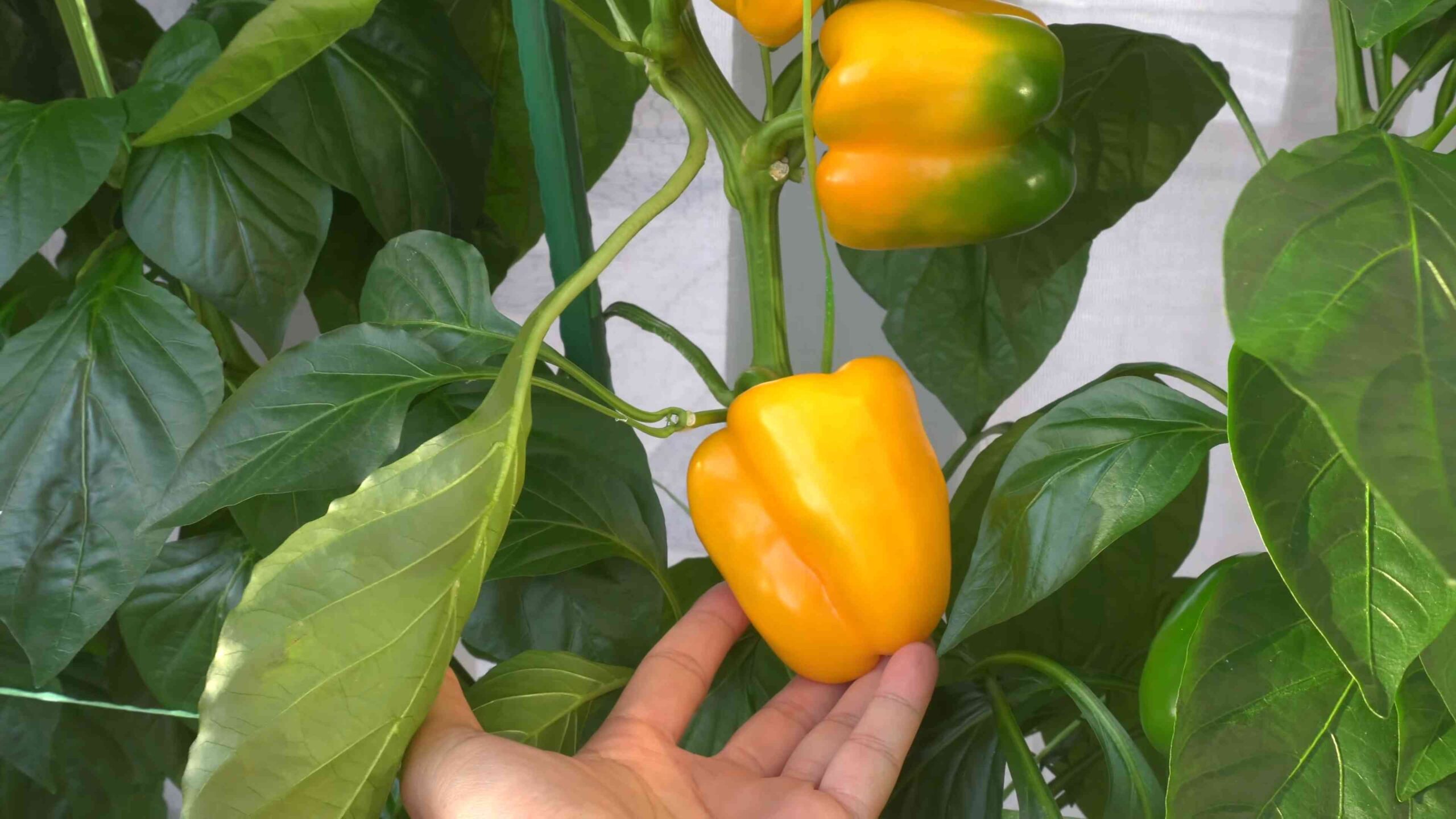
Growing Bell Peppers from Seed: A Comprehensive DIY Guide
Hey there, fellow gardening enthusiasts! I’m so excited to share my tried-and-true method for growing bell peppers from seed. It’s incredibly rewarding to nurture these vibrant veggies from tiny specks into plump, juicy peppers ready for your kitchen. While it might seem daunting, trust me, with a little patience and these detailed steps, you’ll be harvesting your own homegrown peppers in no time!
Why Start Bell Peppers from Seed?
Before we dive in, let’s talk about why starting from seed is a great option:
* Cost-Effective: Buying seed packets is significantly cheaper than purchasing established pepper plants.
* Variety: You’ll have access to a wider range of bell pepper varieties, including heirloom and unique colors that might not be available at your local garden center.
* Control: You have complete control over the growing environment from the very beginning, ensuring healthy and strong plants.
* Satisfaction: There’s nothing quite like the feeling of accomplishment that comes from growing your own food from seed!
Materials You’ll Need
Here’s a list of everything you’ll need to get started:
* Bell pepper seeds (choose your favorite varieties!)
* Seed starting trays or small pots (I prefer trays with a humidity dome)
* Seed starting mix (a light, well-draining mix is crucial)
* Spray bottle filled with water
* Heat mat (optional, but highly recommended for faster germination)
* Grow light (essential for strong, healthy seedlings)
* Small fan (to strengthen stems)
* Plant labels and a permanent marker
* Larger pots (for transplanting seedlings)
* Potting mix (for transplanting)
* Fertilizer (specifically formulated for vegetables)
* Gardening gloves
* Trowel or small shovel
Phase 1: Sowing the Seeds
Bell peppers have a relatively long growing season, so it’s important to start them indoors 6-8 weeks before the last expected frost in your area.
1. Prepare Your Seed Starting Trays: Fill your seed starting trays or small pots with seed starting mix. Gently tap the trays to settle the mix, but don’t pack it down too tightly. You want the roots to be able to easily penetrate the soil.
2. Moisten the Soil: Use your spray bottle to thoroughly moisten the seed starting mix. It should be damp but not soggy. Excess water can lead to damping off, a fungal disease that can kill young seedlings.
3. Sow the Seeds: Place 2-3 seeds in each cell or pot, about ¼ inch deep. This increases the chances of at least one seed germinating in each cell.
4. Cover the Seeds: Gently cover the seeds with a thin layer of seed starting mix.
5. Water Again: Lightly mist the surface of the soil with your spray bottle.
6. Label Your Trays: Use plant labels and a permanent marker to clearly label each tray with the variety of bell pepper you’re planting. This will save you a lot of confusion later on!
7. Create a Humid Environment: Cover the seed starting trays with a humidity dome or plastic wrap. This will help to retain moisture and create a warm, humid environment that is ideal for germination.
8. Provide Bottom Heat (Optional but Recommended): Place the seed starting trays on a heat mat. Bell pepper seeds germinate best at temperatures between 75-85°F (24-29°C). The heat mat will help to maintain these optimal temperatures.
9. Find a Warm Location: Place the seed starting trays in a warm location, away from direct sunlight.
Phase 2: Germination and Early Seedling Care
Germination typically takes 7-14 days, but it can take longer depending on the temperature and variety of bell pepper.
1. Monitor Moisture Levels: Check the moisture levels of the soil daily. If the soil feels dry to the touch, mist it lightly with your spray bottle. Avoid overwatering, as this can lead to damping off.
2. Remove the Humidity Dome: Once the seeds have germinated (you’ll see tiny green sprouts emerging from the soil), remove the humidity dome or plastic wrap.
3. Provide Light: Place the seed starting trays under a grow light. The grow light should be positioned a few inches above the seedlings. Adjust the height of the light as the seedlings grow to prevent them from getting leggy (tall and spindly). I usually keep my grow lights on for 14-16 hours a day.
4. Thin the Seedlings: Once the seedlings have developed their first set of true leaves (the leaves that look like miniature bell pepper leaves), thin them to one seedling per cell or pot. Choose the strongest, healthiest-looking seedling and snip off the others at the soil line with a pair of scissors. Don’t pull them out, as this can disturb the roots of the remaining seedling.
5. Provide Air Circulation: Place a small fan near the seedlings to provide gentle air circulation. This will help to strengthen their stems and prevent fungal diseases. Run the fan for a few hours each day.
6. Water Carefully: Water the seedlings when the soil feels dry to the touch. Water at the base of the plants to avoid wetting the leaves, which can also lead to fungal diseases.
7. Fertilize Lightly: Once the seedlings have developed their second set of true leaves, begin fertilizing them with a diluted solution of liquid fertilizer specifically formulated for vegetables. Follow the instructions on the fertilizer label. I usually fertilize every 1-2 weeks.
Phase 3: Transplanting and Hardening Off
Once the seedlings have grown large enough and the weather is warm enough, it’s time to transplant them into larger pots or directly into your garden.
1. Transplant to Larger Pots (If Necessary): If your seedlings are getting too crowded in their seed starting trays, transplant them into larger pots (about 4-inch pots) filled with potting mix. This will give them more room to grow and develop strong root systems.
2. Harden Off the Seedlings: Before transplanting the seedlings into your garden, you need to harden them off. This process gradually acclimates them to the outdoor environment, preventing transplant shock. Start by placing the seedlings outdoors in a sheltered location for a few hours each day. Gradually increase the amount of time they spend outdoors each day, and also gradually expose them to more sunlight. After about a week, they should be ready to be transplanted into your garden.
3. Prepare Your Garden Bed: Choose a sunny location in your garden with well-drained soil. Bell peppers need at least 6-8 hours of sunlight per day. Amend the soil with compost or other organic matter to improve its fertility and drainage.
4. Transplant the Seedlings: Dig holes in your garden bed that are slightly larger than the root balls of the seedlings. Gently remove the seedlings from their pots and place them in the holes. Backfill the holes with soil and gently firm the soil around the base of the plants. Space the plants about 18-24 inches apart.
5. Water Thoroughly: Water the newly transplanted seedlings thoroughly.
6. Mulch: Apply a layer of mulch around the base of the plants to help retain moisture, suppress weeds, and regulate soil temperature.
7. Provide Support (Optional): If you’re growing tall or heavy-yielding varieties of bell peppers, you may need to provide support for the plants. You can use stakes, cages, or trellises.
Phase 4: Ongoing Care
Once your bell pepper plants are established in your garden, they’ll need ongoing care to thrive.
1. Water Regularly: Water the plants regularly, especially during hot, dry weather. Bell peppers need consistent moisture to produce plump, juicy fruits. Water deeply at the base of the plants, avoiding wetting the foliage.
2. Fertilize Regularly: Fertilize the plants every 2-3 weeks with a fertilizer specifically formulated for vegetables. Follow the instructions on the fertilizer label.
3. Weed Regularly: Keep the garden bed free of weeds, as weeds can compete with the bell pepper plants for nutrients and water.
4. Pest and Disease Control: Monitor the plants regularly for pests and diseases. Common pests of bell peppers include aphids, flea beetles, and tomato hornworms. Common diseases include blossom end rot and fungal diseases. Take appropriate measures to control pests and diseases as needed. I prefer using organic pest control methods whenever possible.
5. Pruning (Optional): Pruning bell pepper plants can help to improve air circulation and encourage fruit production. Remove any suckers (small shoots that grow from the base of the plant) and any yellowing or diseased leaves.
6. Harvesting: Bell peppers are typically ready to harvest 60-90 days after transplanting, depending on the variety. Harvest the peppers when they are fully colored and firm to the touch.
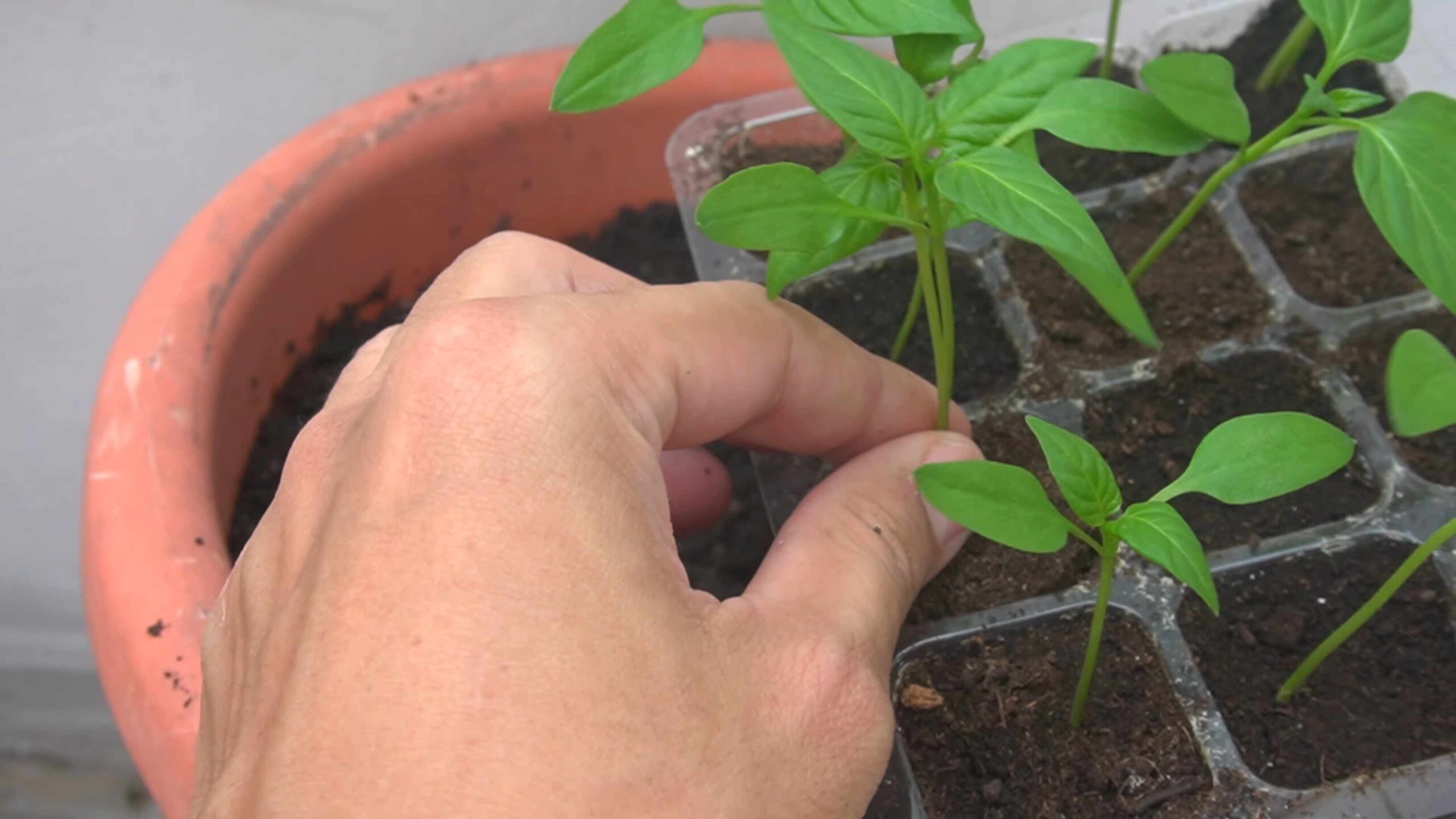
Conclusion
So, there you have it! Growing bell peppers from seed might seem daunting at first, but with a little patience and these simple steps, you can cultivate a thriving pepper patch right in your own home or garden. The satisfaction of harvesting your own vibrant, crisp bell peppers, knowing you nurtured them from tiny seeds, is truly unparalleled. Forget those bland, overpriced peppers from the grocery store – imagine the burst of flavor from a freshly picked, homegrown bell pepper in your next stir-fry, salad, or stuffed pepper dish!
This DIY trick is a must-try for several reasons. First, it’s incredibly cost-effective. A packet of bell pepper seeds is far cheaper than buying mature plants or a constant supply of peppers from the store. Second, you have complete control over the variety you grow. Want to experiment with purple, yellow, or even chocolate bell peppers? Growing from seed allows you to explore a wider range of options than you’ll typically find at your local nursery. Third, it’s a rewarding and educational experience, especially for families. Watching those tiny seeds sprout and develop into productive plants is a fantastic way to connect with nature and learn about the growing process.
Don’t be afraid to experiment with variations! Try starting your seeds in different types of seed-starting mix to see which works best for you. Consider using grow lights to supplement natural sunlight, especially if you live in a region with shorter days. Once your seedlings are ready to transplant, you can choose to grow them in containers, raised beds, or directly in the ground, depending on your space and preferences. You can also try companion planting with herbs like basil or marigolds to deter pests and attract beneficial insects.
Growing bell peppers from seed is not just about saving money or having access to unique varieties; it’s about connecting with the food you eat and experiencing the joy of nurturing life from the very beginning. It’s about embracing a more sustainable and self-sufficient lifestyle.
We encourage you to give this DIY trick a try. Start small, perhaps with just a few seeds, and see how it goes. Don’t be discouraged if you encounter a few challenges along the way – gardening is a learning process, and every mistake is an opportunity to improve. And most importantly, share your experience with us! We’d love to hear about your successes, your challenges, and any tips or tricks you discover along the way. Post pictures of your seedlings, your mature plants, and your delicious bell pepper creations. Let’s build a community of bell pepper enthusiasts and inspire others to embark on this rewarding journey. Happy growing!
Frequently Asked Questions (FAQ)
What is the best time to start bell pepper seeds indoors?
The ideal time to start your bell pepper seeds indoors is typically 6-8 weeks before the last expected frost in your area. This allows the seedlings to develop a strong root system and be ready for transplanting outdoors once the weather warms up. To determine your last frost date, consult your local weather service or gardening resources. Starting too early can result in leggy, weak seedlings, while starting too late may delay your harvest.
What kind of soil should I use for starting bell pepper seeds?
A light, well-draining seed-starting mix is crucial for successful germination. Avoid using garden soil, as it can be too heavy and may contain pathogens that can harm young seedlings. Look for a commercially available seed-starting mix or create your own by combining equal parts peat moss, vermiculite, and perlite. The mix should be moist but not soggy.
How often should I water my bell pepper seedlings?
Water your bell pepper seedlings regularly, keeping the soil consistently moist but not waterlogged. Overwatering can lead to root rot, while underwatering can stunt their growth. A good rule of thumb is to water when the top inch of soil feels dry to the touch. Use a gentle watering can or spray bottle to avoid disturbing the delicate seedlings.
What kind of light do bell pepper seedlings need?
Bell pepper seedlings require plenty of light to grow strong and healthy. If you’re starting your seeds indoors, provide them with at least 14-16 hours of light per day. A sunny windowsill may suffice, but supplemental lighting, such as fluorescent grow lights or LED grow lights, is often necessary, especially during the winter months. Position the lights a few inches above the seedlings and adjust as they grow.
When should I transplant my bell pepper seedlings outdoors?
Transplant your bell pepper seedlings outdoors when the danger of frost has passed and the soil has warmed up to at least 60°F (15°C). Harden off the seedlings by gradually exposing them to outdoor conditions for a week or two before transplanting. This helps them acclimate to the sun, wind, and temperature changes. Choose a sunny location with well-drained soil.
How far apart should I plant bell pepper plants?
Space bell pepper plants 18-24 inches apart in rows that are 24-36 inches apart. This allows them ample room to grow and prevents overcrowding, which can lead to disease and reduced yields. If you’re growing bell peppers in containers, choose pots that are at least 12 inches in diameter.
What are some common pests and diseases that affect bell pepper plants?
Common pests that can affect bell pepper plants include aphids, whiteflies, spider mites, and pepper weevils. Diseases include blossom-end rot, fungal leaf spot, and viral diseases. Regularly inspect your plants for signs of pests or diseases and take appropriate action, such as using insecticidal soap, neem oil, or copper fungicide. Proper watering, good air circulation, and crop rotation can also help prevent problems.
How long does it take for bell peppers to mature?
Bell peppers typically take 60-90 days to mature, depending on the variety. Green bell peppers can be harvested when they are firm and fully sized, even if they haven’t fully changed color. Colored bell peppers, such as red, yellow, and orange, require a longer growing season and should be harvested when they have reached their mature color and are firm to the touch.
Can I save seeds from my homegrown bell peppers?
Yes, you can save seeds from your homegrown bell peppers, but keep in mind that they may not come true to type, especially if you grew hybrid varieties. To save seeds, allow the peppers to fully ripen on the plant until they are soft and wrinkled. Remove the seeds, rinse them thoroughly, and dry them on a paper towel for several days before storing them in an airtight container in a cool, dark place.
What are some tips for getting the best yield from my bell pepper plants?
To maximize your bell pepper yield, provide your plants with plenty of sunlight, water, and nutrients. Fertilize regularly with a balanced fertilizer or compost tea. Prune away any suckers that grow from the base of the plant to encourage more fruit production. Support the plants with stakes or cages to prevent them from falling over under the weight of the peppers. And most importantly, be patient and enjoy the process of growing your own delicious bell peppers!
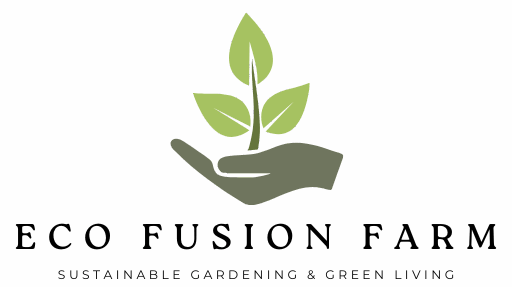
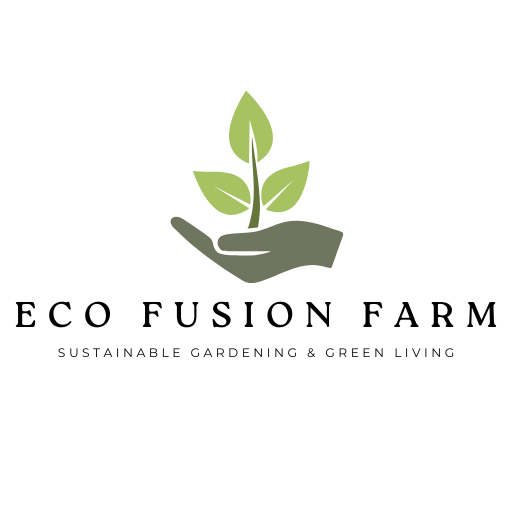
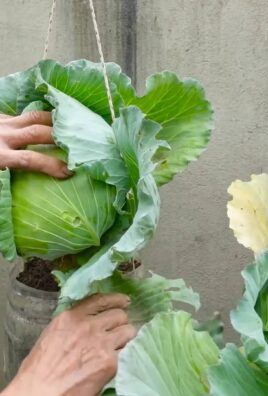
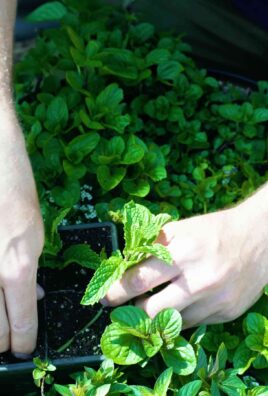

Leave a Comment